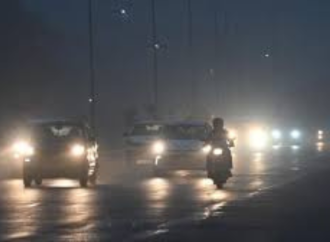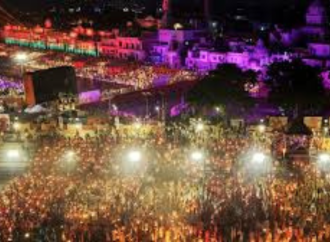The world-famous Valley of Flowers, a UNESCO World Heritage Site located in the Himalayan region of Uttarakhand, officially closed to visitors for the 2025 season on October 31 (Friday).Known for its colorful alpine blooms and breathtaking views, the valley saw fewer tourists this year due to untimely snowfall that blanketed the landscape in snow rather
The world-famous Valley of Flowers, a UNESCO World Heritage Site located in the Himalayan region of Uttarakhand, officially closed to visitors for the 2025 season on October 31 (Friday).
Known for its colorful alpine blooms and breathtaking views, the valley saw fewer tourists this year due to untimely snowfall that blanketed the landscape in snow rather than flowers.
Tourist Numbers Fall Due to Sudden Weather Change
According to official data, 15,934 domestic and foreign tourists visited the Valley of Flowers in 2025, generating around ₹33.28 lakh in revenue for the Forest Department.
In comparison, 19,401 tourists visited in 2024, contributing nearly ₹39.40 lakh.
Officials say the drop in tourist numbers is directly linked to unexpected snowfall and unstable weather patterns that shortened the blooming season and transformed the valley into a winter-like setting.
From Floral Paradise to Snow-Covered Wonder
Discovered in 1931 by British mountaineer Frank Smythe, the Valley of Flowers is usually famous for its vibrant monsoon blossoms that attract nature lovers and trekkers from across the globe.
However, in 2025, snowfall arrived early, covering the valley for several days and reducing flower sightings.
Local tour operator Sanjay Sati shared,
“Even though the flowers had faded, the valley’s snowy charm attracted many visitors. It was a different kind of magic this year.”
Forest Range Officer Chetna Kandpal added that despite fewer flowers, 8–10 tourists were still visiting daily to witness the valley’s stunning winter scenery.
Part of the Nanda Devi Biosphere Reserve
The Valley of Flowers, located in Chamoli district, forms part of the Nanda Devi Biosphere Reserve — a haven for rare and endangered plant species.
It opens to tourists every year between June and October, offering a limited window for exploration before the heavy snow makes access impossible.
From November onwards, the area is closed for safety and conservation until the next season.
Impact of Climate Change on the Valley
Experts warn that early snowfall and changing weather trends could be a sign of climate change affecting high-altitude ecosystems.
This year’s shortened blooming season has raised concerns about the future of tourism and biodiversity in the region.
Environmentalists are now closely monitoring how rising temperatures and erratic weather could influence plant life and visitor patterns in coming years.
Forest Department Prepares for Next Season
With the valley now closed, forest officials will begin maintenance, trail inspection, and conservation work throughout the winter months.
Preparations are already underway for a safe reopening in June 2026, ensuring that both tourists and the fragile ecosystem are protected.
🌿 Key Highlights:
-
Valley of Flowers closed for 2025 season on October 31.
-
15,934 tourists visited this year vs. 19,401 in 2024.
-
Untimely snowfall turned the valley into a snowy wonderland.
-
Part of Nanda Devi Biosphere Reserve, home to 850+ floral species.
-
Climate change impacts observed; officials focus on restoration and conservation.


















Leave a Comment
Your email address will not be published. Required fields are marked with *